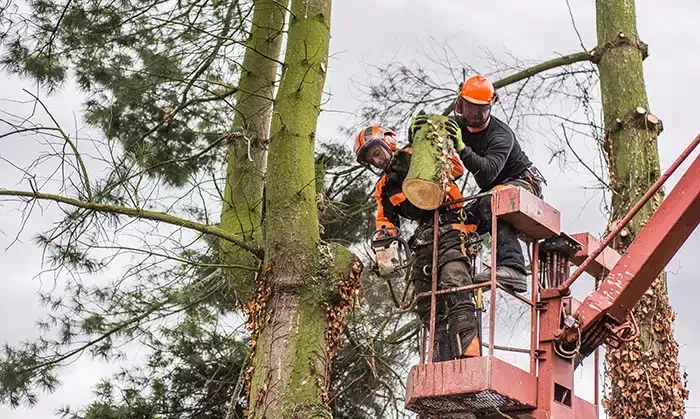Santa Clarita Tree Service
(661) 338-5661

Trees are a vital part of any landscape, offering beauty, shade, and environmental benefits. However, when a tree becomes unstable or hazardous, it can quickly turn into a threat to people and property.
That’s where emergency tree-cutting comes into play. This service is essential in situations where immediate action is needed to prevent injury, structural damage, or further complications caused by storms, disease, or other factors.
Knowing when emergency tree cutting is required helps homeowners and property managers respond quickly and protect what matters most.
After Severe Weather Events
Storms are one of the most common causes of tree damage, often leading to urgent removal needs.
- Broken or hanging limbs: After strong winds or heavy snow, large branches may split or hang precariously. These limbs can fall unexpectedly, posing a danger to people and structures below.
- Uprooted or leaning trees: A tree that has been partially uprooted or is leaning after a storm may be unstable and at risk of falling. Emergency cutting is necessary to eliminate the hazard before it causes damage.
- Trees blocking roads or driveways: Fallen trees that block access to your home or roadways require immediate removal to restore safety and mobility.
When a Tree Poses an Immediate Risk to Safety
Some tree conditions are inherently dangerous and require prompt attention, even without storm involvement.
- Cracked trunks or large splits: Major cracks in the trunk or between limbs weaken a tree’s structure and make sudden collapse more likely, especially under stress.
- Branches touching power lines: Trees growing into or falling against power lines can cause power outages or fires. These situations are highly dangerous and require urgent attention from trained professionals.
- Trees near high-traffic areas: If a weakened or diseased tree is near a sidewalk, school, or busy street, it poses a heightened risk to pedestrians and drivers. Emergency cutting reduces the potential for accidents.
Following Signs of Severe Tree Disease or Infestation
A diseased or pest-infested tree can deteriorate rapidly, increasing the likelihood of failure.
- Mushrooms or fungus at the base: Fungal growth at the base of a tree may indicate internal rot, which compromises the tree’s structural integrity and stability.
- Sudden leaf loss or dieback: A tree that rapidly drops leaves or shows widespread branch dieback may be suffering from disease or pest damage that weakens it from the inside.
- Visible pest activity or boreholes: Signs of termites, beetles, or other wood-boring insects may point to severe internal damage. Emergency removal may be necessary if the tree is beyond saving.
To Prevent Property Damage
Sometimes, proactive emergency cutting is required to prevent damage before it happens.
- Roots damaging foundations or sidewalks: Tree roots that push against home foundations, sidewalks, or driveways can cause cracks or uplift surfaces. If the problem is urgent, the tree may need to be removed quickly.
- Overhanging limbs above structures: Large limbs that hang over roofs, garages, or utility lines can become dangerous during storms or strong winds. Emergency trimming or removal can protect your property from serious storm damage.
- Trees encroaching on new construction: During renovations or additions to your home, a nearby tree may suddenly pose a risk to the building site or equipment. Emergency cutting helps avoid delays and hazards.
When Local Authorities Require It
Sometimes emergency tree cutting isn’t just a recommendation—it’s a requirement.
- City-mandated removals: If a tree is deemed a public safety hazard by city inspectors or arborists, you may be legally required to have it removed immediately.
- Insurance or liability concerns: In cases where a tree poses a known hazard and a claim is made, insurance companies may require swift removal to limit further liability or risk.
- Utility company notices: If a tree interferes with electrical infrastructure, utility companies may issue a removal order or perform the work themselves. Acting quickly can help you manage the process on your terms.
Emergency tree cutting is a critical service that helps prevent injury, damage, and costly repairs. Whether caused by a sudden storm, disease, or safety hazard, recognizing when a tree requires urgent removal is key to protecting your property and the people around it.
By staying alert to the signs of danger and working with experienced tree care professionals, you can ensure that emergencies are handled quickly, safely, and effectively.